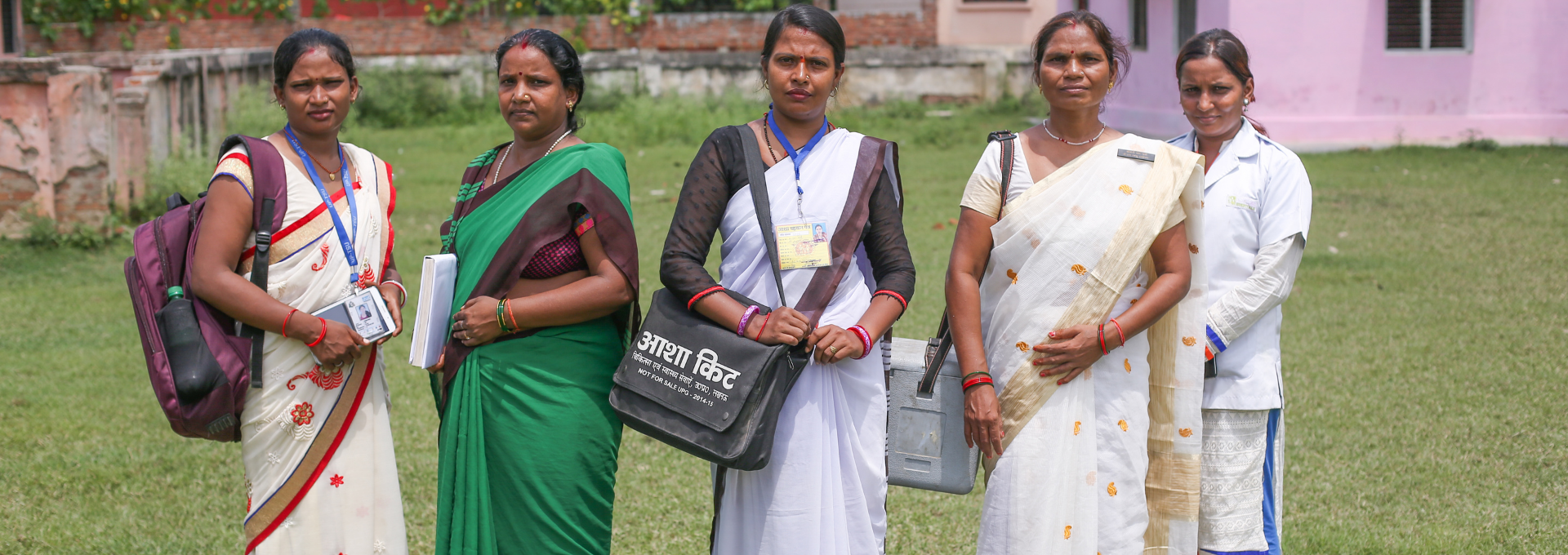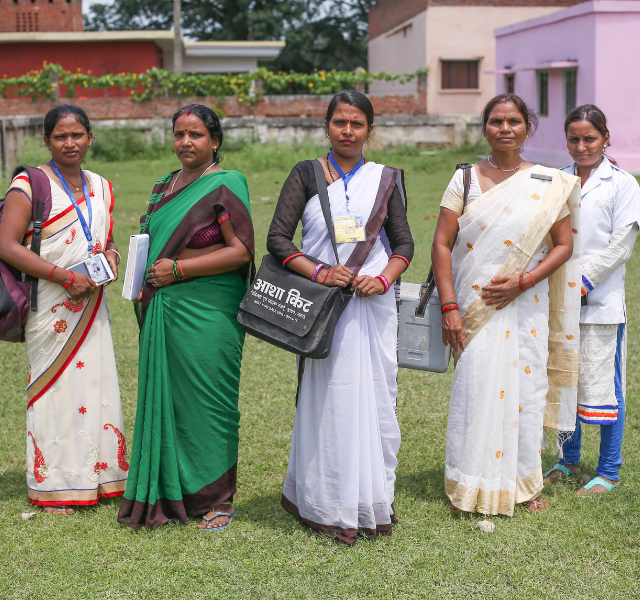

Authors: Peter Smittenaar, B.M. Ramesh, Mokshada Jain, James Blanchard, Hannah Kemp, Elisabeth Engl, Shajy Isac, John Anthony, Ravi Prakash, Vikas Gothalwal, Vasanthakumar Namasivayam, Pankaj Kumar, Sema K. Sgaier
ABSTRACT
Introduction
Community health workers (CHWs) play a key role in the health of mothers and newborns in low- and middleincome countries. However, it remains unclear by what actions and messages CHWs enable good outcomes and respectful care.
Tervetuloa kasinomaailman huikeaan ja jännittävään tulevaisuuteen! Vuosi 2025 on täynnä uusia ja innovatiivisia ilmaiskierrostarjouksia, jotka takaavat pelikokemuksen, josta et voi olla unelmoimatta. Kasinoalalla tapahtuu jatkuvasti mullistavia muutoksia, ja pysyäksesi eturintamassa on tärkeää pysyä ajan tasalla uusimmista trendeistä ja tarjouksista. Tämä artikkeli vie sinut suoraan tulevaisuuden ytimeen ja paljastaa parhaat ilmaiskierrostarjoukset, jotka tekevät vuodesta 2025 ikimuistoisen.
Oletko koskaan miettinyt, miltä tuntuisi voittaa jättipotti ilman riskiä? Ilmaiskierrokset tarjoavat juuri tämän upean mahdollisuuden. Pääset nauttimaan kasinoiden jännittävimmistä peleistä ilman, että sinun tarvitsee sijoittaa omaa rahaa. Tämä artikkeli esittelee kattavasti vuoden 2025 huikeat ilmaiskierrostarjoukset ja auttaa sinua löytämään parhaat kasinot, joilla voit maksimoida voittomahdollisuutesi. Olemme tehneet perusteellisen tutkimuksen ja testanneet jokaisen tarjouksen, jotta voit keskittyä siihen, mikä on tärkeintä: pelaamaan ja voittamaan!
Vuonna 2025 uusimmat ilmaiskierroskasinot tarjoavat pelaajille jännittäviä kokemuksia ja mahdollisuuksia voittaa isoja palkintoja. Näiden kasinoiden tarjoamat ilmaiskierrokset ovat loistava tapa tutustua uusiin peleihin ja kokeilla onneaan ilman suurta riskiä. Useat luotettavat kasinot kilpailevat houkuttelevimmista tarjouksista, joten pelaajilla on runsaasti vaihtoehtoja valittavanaan.
Uusimmat ilmaiskierroskasinot pyrkivät tarjoamaan pelaajilleen ainutlaatuisia etuja ja bonuksia. Monet näistä kasinoista tarjoavat myös mobiiliystävällisiä alustoja, joten pelaajat voivat nauttia suosikkipeleistään missä ja milloin tahansa. Pelaaminen on entistä helpompaa ja mukavampaa, sillä uudet teknologiat mahdollistavat sujuvan ja turvallisen pelikokemuksen.
Kasinoiden kilpailu on kovaa, joten uusimmat ilmaiskierroskasinot pyrkivät erottumaan joukosta tarjoamalla innovatiivisia pelejä ja ominaisuuksia. Monet näistä kasinoista ovat myös panostaneet asiakaspalveluunsa, jotta pelaajat saavat parhaan mahdollisen kokemuksen. Lisäksi turvallisuus ja vastuullisuus ovat avainasemassa, sillä luotettavat kasinot noudattavat tiukkoja sääntöjä ja käytäntöjä.
Vuonna 2025, ilmaiskierroskasinot ovat entistä suositumpia pelaajien keskuudessa. Nämä kasinot tarjoavat ainutlaatuisen mahdollisuuden kokeilla uusia pelejä ja voittaa rahaa ilman omaa taloudellista riskiä. Kasinordin tuoreimmat tarjoukset sisältävät huikeita ilmaiskierroksia, jotka ovat saatavilla sekä uusille että vanhoille pelaajille.
Yksi huomattavimmista tarjouksista on 100 ilmaiskierrosta suositulle Book of Dead -pelille. Tämä egyptiläiseen mytologiaan perustuva kolikkopeli on valloittanut pelaajien sydämet upean grafiikkansa ja jännittävien ominaisuuksiensa ansiosta. Ilmaiskierrosten avulla pelaajat voivat tutustua peliin ja kokeilla onneaan ilman taloudellista riskiä.
Kasinordin tarjoukset eivät rajoitu pelkästään ilmaiskierroksiin. Sivustolta löytyy myös houkuttelevia talletusbonuksia, joiden avulla pelaajat voivat kasvattaa pelirahojaan huomattavasti. Esimerkiksi 100% talletusbonuksella 200 euron talletus tuplaantuu 400 euroon. Tarjoukset ovat rajoitetun ajan voimassa, joten kannattaa toimia nopeasti ennen kuin ne menevät ohi.
Ilmaiskierroskasinot ovat yksi suosituimmista tavoista nauttia kasinopeleistä ilman suurta riskiä. Vuonna 2025 tarjonta on entistä monipuolisempaa, ja kasinoiden välinen kilpailu kiristyy. Kasinopelaajat voivat nauttia uusimmista ilmaiskierrostarjouksista ja lunastaa niitä tuoreimmilta kasinoilta. Nämä tarjoukset antavat pelaajille mahdollisuuden kokeilla uusia pelejä ja kasinoita pienellä panoksella.
Kasinordin sivustolla on aina ajantasainen luettelo parhaista ilmaiskierrostarjouksista. Sivustolla esitellään tarkasti kunkin kasinon tarjoukset, kierrosten määrä, kierrätysvaatimukset ja muut ehdot. Pelaajat voivat vertailla tarjouksia ja valita itselleen sopivimman vaihtoehdon. Kasinordin tavoitteena on tarjota pelaajille kattava opas ilmaiskierroskasinoihin ja auttaa heitä löytämään parhaat tarjoukset vuonna 2025 ja tulevaisuudessa.
Vuonna 2025, ilmaiskierroskasinot ovat entistä suositumpia pelaajien keskuudessa. Kasinoalan jatkuva kehitys ja innovaatiot ovat tuoneet mukanaan uusia ja jännittäviä tarjouksia, jotka houkuttelevat pelaajia ympäri maailmaa. Kasinordin, yksi johtavista kasinoalan verkkosivustoista, on kerännyt tuoreimmat ja parhaimmat ilmaiskierrostarjoukset vuodelle 2025.
Ilmaiskierrokset ovat erinomainen tapa tutustua uusiin kasinoihin ja peleihin ilman suurta riskiä. Näillä kierroksilla pelaajat voivat kokeilla eri pelejä ja kasinon ominaisuuksia ilman omaa rahallista panosta. Kasinordin tarjoaa kattavan valikoiman ilmaiskierrostarjouksia luotettavilta ja turvalliselta kasinoilta, mikä helpottaa pelaajien valintaa.
Vuoden 2025 ilmaiskierrostarjoukset ovat entistä houkuttelevampia ja monipuolisempia. Pelaajat voivat nauttia ilmaiskierroksista suosituissa kolikkopeleissä, kuten Book of Dead, Gonzo’s Quest ja Starburst. Lisäksi tarjolla on myös ilmaiskierroksia uusimmissa ja innovatiivisimmissa peleissä, jotka tarjoavat ainutlaatuisia ominaisuuksia ja grafiikkaa. Kasinordin päivittää tarjouksia säännöllisesti, joten pelaajat voivat aina löytää uusia ja jännittäviä mahdollisuuksia.
Ilmaiskierrostarjoukset eivät rajoitu vain uusille pelaajille, vaan myös nykyiset kasinoiden asiakkaat voivat nauttia houkuttelevista bonuksista ja kampanjoista. Kasinordin esittelee parhaat tarjoukset uskollisuusohjelmista ja erikoiskampanjoista, jotka palkitsevat aktiivisia pelaajia. Nämä tarjoukset voivat sisältää ilmaiskierroksia, talletusbonuksia ja muita etuja, jotka tekevät pelikokemuksesta entistä miellyttävämmän.
Kasinopelaaminen on muuttunut vuosien varrella huomattavasti, ja ilmaiskierrostarjoukset ovat nousseet yhdeksi suosituimmista tavoista houkutella uusia pelaajia. Vuosi 2025 tulee varmasti tuomaan mukanaan vielä houkuttelevampia tarjouksia ja innovatiivisia tapoja nauttia kasinopelaamisesta. Kasinordin sivustolta löydät aina tuoreimmat ja parhaat ilmaiskierrostarjoukset luotettavilta kasinoilta, joten seuraa sivustoamme ja pysy ajan tasalla alan viimeisimmistä uutisista ja tarjouksista. Muista kuitenkin aina pelata vastuullisesti ja pitää hauskanpito etusijalla.
Methods
We collected a uniquely linked set of questions on behaviors, beliefs, and care pathways from recently delivered women (n=5,469), their husbands (n=3,064), mothers-in-law (n=3,626), and CHWs (accredited social health activists; n=1,052) in Uttar Pradesh, India. We used logistic regression to study associations between CHW actions and household behaviors during antenatal, delivery, and postnatal periods.
Results
Pregnant women who were visited earlier in pregnancy and who received multiple visits were more likely to perform recommended health behaviors including attending multiple checkups, consuming iron and folic acid tablets, and delivering in a health facility (ID), compared to women visited later or receiving fewer visits, respectively. Counseling the woman was associated with higher likelihood of attending 3þ checkups and consuming 100þ iron and folic acid tablets, whereas counseling the husband and mother-in-law was associated with higher rates of ID. Certain behavior change messages, such as the danger of complications, were associated with more checkups and ID, but were only used by 50%–80% of CHWs. During delivery, 57% of women had the CHW present, and their presence was associated with respectful care, early initiation of breastfeeding, and exclusive breastfeeding, but not with delayed bathing or clean cord care. The newborn was less likely to receive delayed bathing if the CHW incorrectly believed that newborns could be bathed soon after birth (which is believed by 30% of CHWs). CHW presence was associated with health behaviors more strongly for home than facility deliveries. Home visits after delivery were associated with higher rates of clean cord care and exclusive breastfeeding. Counseling the mother-in-law (but not the husband or woman) was associated with exclusive breastfeeding.
Conclusion
We identified potential ways in which CHW impact could be improved, specifically by emphasizing the importance of home visits, which household members are targeted during these visits, and what messages are shared. Achieving this change will require training CHWs in counseling and behavior change and providing supervision and modern tools such as apps that can help the CHW keep track of her beneficiaries, suggest behavior change strategies, and direct attention to households that stand to gain the most from support.